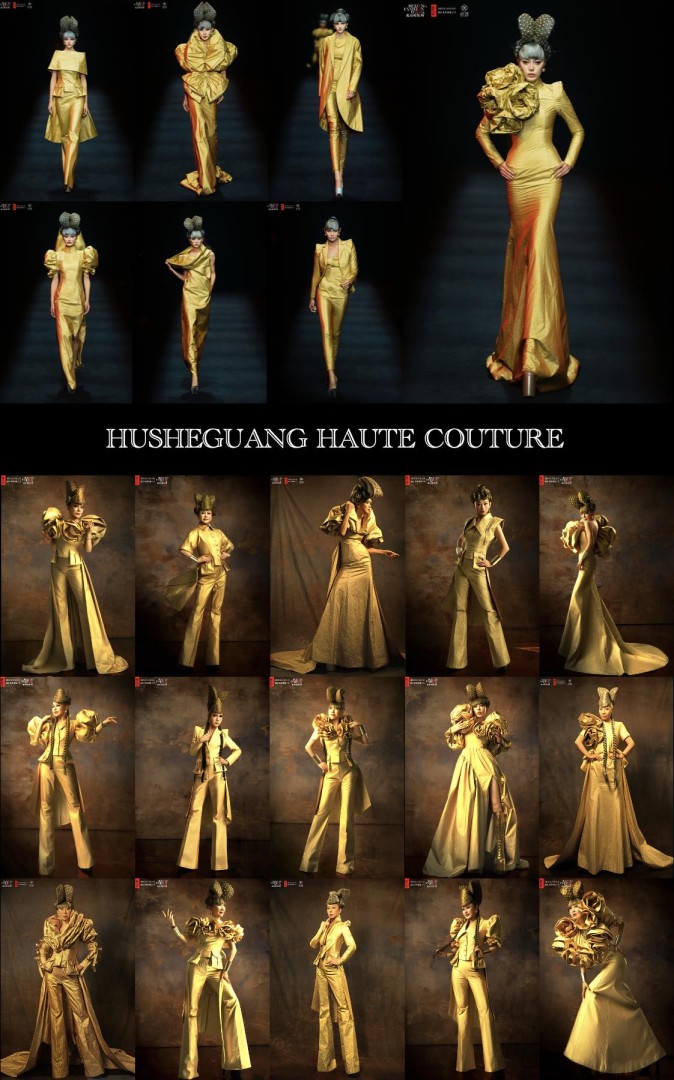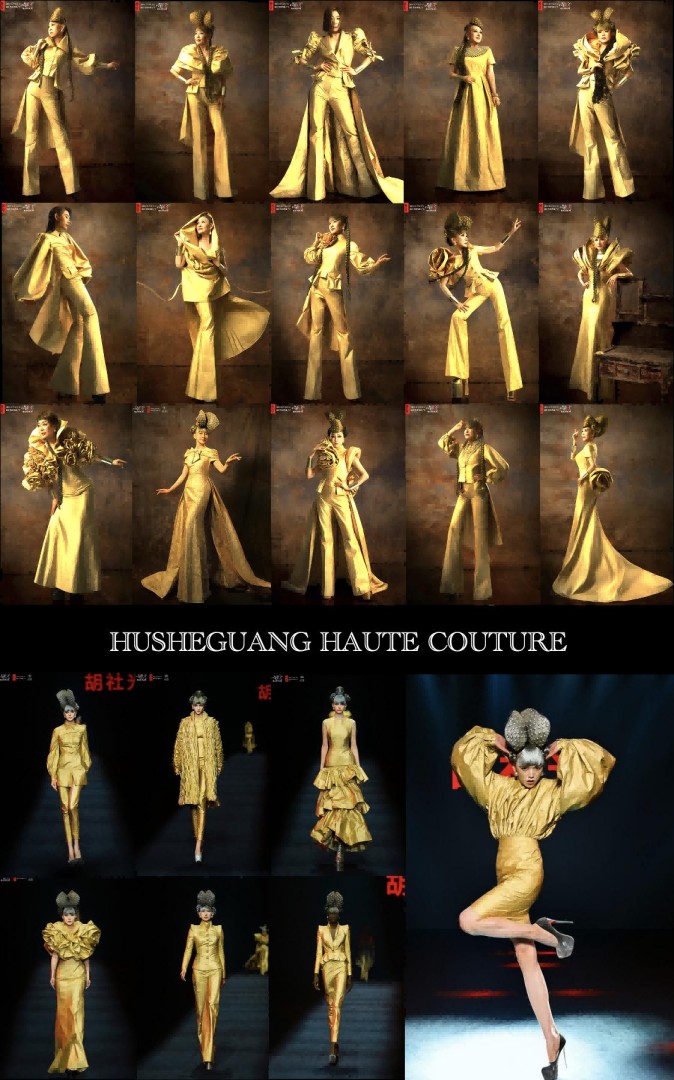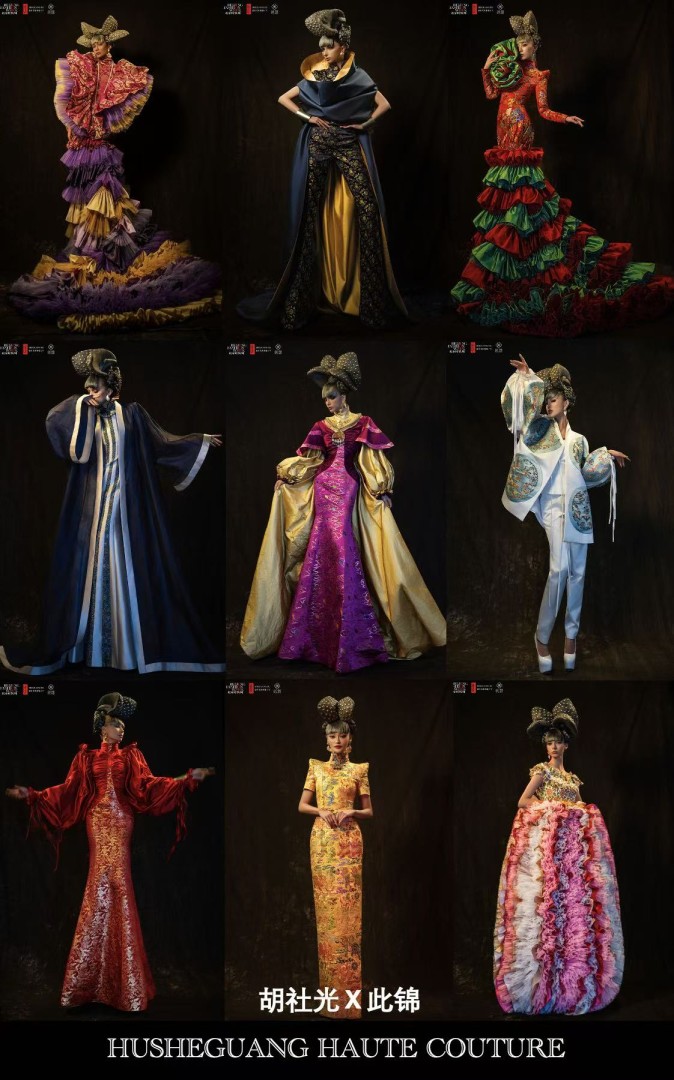Celebrated Chinese-Dutch fashion designer Hu Sheguang once again commanded the spotlight with a runway show that drew large crowds and sparked online buzz. Renowned for nearly three decades of bold, boundary-defying creations, Hu unveiled his latest haute couture series, JIN-meaning "gold" or "brocade" in Chinese-on September 14 at the China National Convention Center in Beijing, as part of Beijing Fashion Week.

The first part features a wide array of garments, ranging from business suits to evening gowns, all made of golden Tyvek paper.
A group of older models, who are members of the Sheguang Hu Fashion Women's Army, presented those glittering designs. Their raised shoulder pads and tall wigs embellished with rivets infused strength into their looks, whereas the golden rose adornments added much elegance to the designs.

The use of inexpensive and environmentally friendly Tyvek paper, according to the designer, aims to inspire discussions about how to make high fashion more accessible and sustainable.
Yunjin brocade, a precious and labor-intensive fabric, highlighted the second segment of Hu's JIN series, which the designer collaborated with Ci Jin, a high-end weaving art brand that sponsored the fabric for the series.
For the series, Hu borrowed inspiration from the character traits of the 12 Beauties of Jinling as depicted in the classic Chinese opus Dream of the Red Chamber and the ancient royal clothing of both China and Europe.

The audience was swept away as international supermodels strutted the catwalk, presenting 19 majestic haute couture gowns made of yunjin brocade, which the designer claimed was worth about 10 million yuan ($1,404,692).
Yun, means clouds and jin means brocade. Brocade is often described in ancient Chinese texts as a kind of silk fabric that contains gold. Among the best-known Chinese brocades, yunjin brocade from Nanjing, Jiangsu province, takes its name from its gorgeous, rosy cloud-like color.

As a luxurious textile, yunjin brocade is distinguished by the incorporation of gold and silver thread and peacock feather filaments. It was used by the imperial family during the Yuan (1271-1368), Ming (1368-1644), and Qing (1644-1911) dynasties, with patterns such as dragons, phoenixes, river cliffs, and water that reflect imperial culture.
According to Ci Jin, the intricate craftsmanship of yunjin brocade is such that a pair of skilled weavers collaborating over the span of a day is only able to produce 5 to 6 centimeters of the luxurious fabric.
In 2009, the craftsmanship of Nanjing yunjin brocade was included on the UNESCO's Intangible Cultural Heritage list.
Hu admitted that his visit to the Ci Jin factory enabled him to see how much effort it requires to produce the precious textile. "I had so much reverence for the yunjin brocade that I had an almost ritualistic caution when I treated those fabrics," he recalled.
Qiu Caijuan, director of the Ci Jin Intangible Cultural Heritage Art Museum in Wuhan, Hubei province, raved about the collaboration her brand had with Hu Sheguang.
She said that Hu's designs filled her eyes with tears as they shattered the popular stereotype that Chinese intangible cultural heritage techniques are old and outdated, and showcased the deep heritage and artistic flair of the yunjin brocade.
Wang Weijun, a manager at Ci Jin, shared after the show that the collaboration with a haute couture designer like Hu transformed yunjin brocade, a fabric involving intangible cultural heritage techniques, from lofty artworks into fashion pieces.

The significance of this fashion show is to give consumers the opportunity to change from being merely viewers of intangible cultural heritage to its experiencers, wearers, and promoters, Wang added.
Hu Sheguang's JIN series was launched as part of the 2026 Spring/Summer Beijing Fashion Week.
Media Contact
Company Name: Wuhan Hu Er Ye Cultural Media Co., Ltd.
Contact Person: Hu Sheguang
Email: Send Email
Country: China
Website: https://www.sheguang-hu.com/





